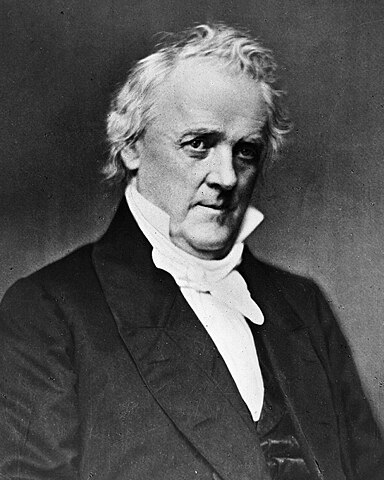James Buchanan served as the 15th President of the United States from 1857 to 1861, leading the nation during a pivotal and tumultuous period in its history. His presidency is often associated with the lead-up to the American Civil War. Here’s a look at James Buchanan’s presidency and his role in the events of his time:
Early Life and Political Career:
- James Buchanan was born on April 23, 1791, in Cove Gap, Pennsylvania. He was a lawyer and entered politics, serving as a U.S. Senator from Pennsylvania and as Minister to Russia, among other diplomatic posts.

Presidential Election of 1856:
- Buchanan was the Democratic Party’s nominee in the 1856 presidential election. He won the election and took office as the 15th President.
Domestic Policies:
- Buchanan’s presidency was marked by the contentious issue of slavery. His support for the Lecompton Constitution, which sought to admit Kansas as a slave state, led to divisions within his party and furthered sectional tensions.
Dred Scott Decision:
- In 1857, the U.S. Supreme Court issued the infamous Dred Scott v. Sandford decision, which declared that African Americans were not U.S. citizens and upheld the legality of slavery in the territories. The decision deepened the divide between North and South.
Kansas-Nebraska Act and “Bleeding Kansas”:
- The conflict in Kansas over the issue of slavery escalated during Buchanan’s presidency, with violent confrontations between pro-slavery and anti-slavery settlers earning the territory the name “Bleeding Kansas.”
John Brown’s Raid:
- In 1859, the abolitionist John Brown led a raid on the federal arsenal at Harpers Ferry, Virginia (now West Virginia). Buchanan ordered U.S. Marines to suppress the raid, and Brown was subsequently executed.
Secession Crisis:
- Buchanan’s presidency saw the secession of Southern states. While he opposed secession, he believed that the federal government lacked the constitutional authority to prevent it.
Lincoln’s Election and Departure:
- In the 1860 presidential election, Abraham Lincoln was elected as Buchanan’s successor. Buchanan’s term ended in March 1861, and he left office as the nation teetered on the brink of civil war.
Legacy:
- James Buchanan is often criticized for his handling of the secession crisis and the intensification of sectional tensions during his presidency. His inability to prevent the dissolution of the Union is a central part of his historical legacy.
Post-Presidential Life:
- After leaving the presidency, Buchanan retired to Wheatland, his estate in Pennsylvania. He remained out of politics and continued to write on various topics.
Death:
- James Buchanan died on June 1, 1868, at Wheatland in Lancaster, Pennsylvania.
James Buchanan’s presidency is remembered for its association with the lead-up to the American Civil War. While he took office with hopes of maintaining the Union, his presidency was marred by divisive issues and sectional conflicts that ultimately led to the secession of Southern states and the outbreak of the Civil War just a few months after he left office.











